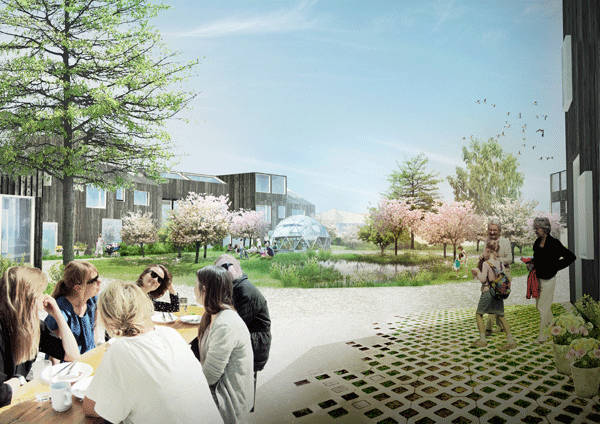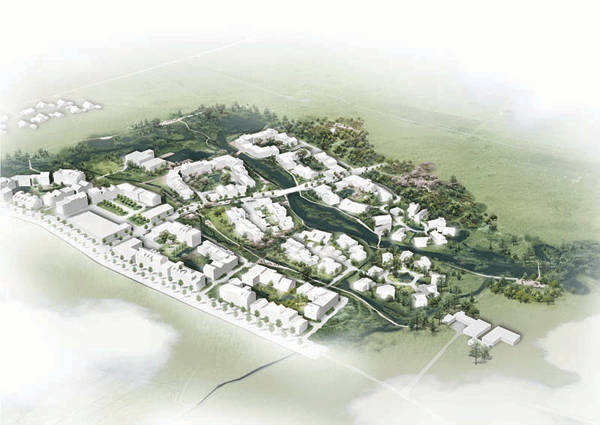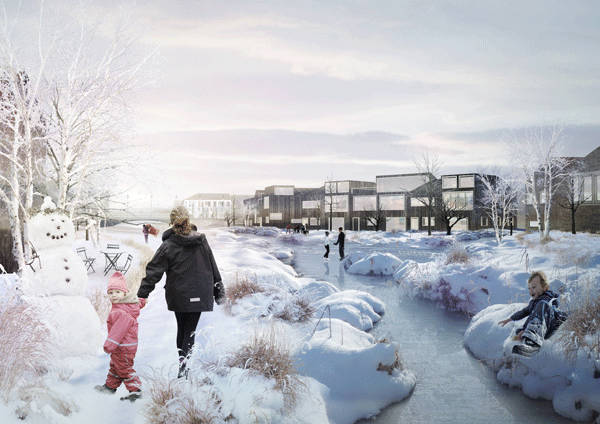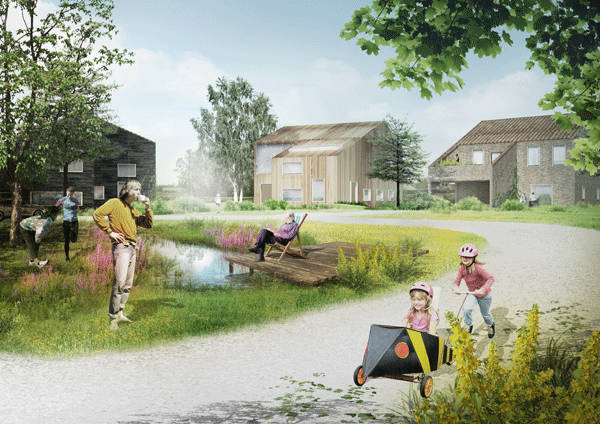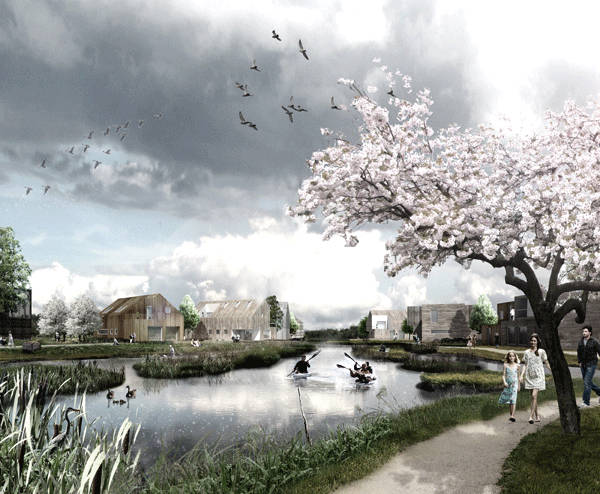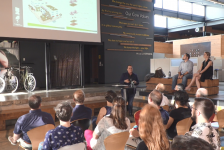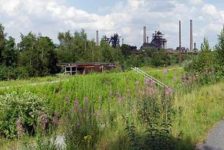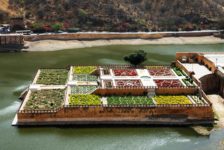The Delta District Innovation in Water Management, Vinge, Denmark, by SLA The creative mind sees opportunity where most can only see difficulty – this is the beauty of our profession as (landscape) architects. We all are aware of the climate change the planet is facing, but how can we overcome the challenges imposed by it and still provide better urban environments? Landscape architects from SLA prove that this is indeed possible with the beautiful project The Delta District in Denmark, which skillfully deals with local issues – such as flooding – and improves the quality of life of the residents.
The Delta District and the City of Vinge The Delta District is the first stage of a larger project: Vinge. Vinge is a new sustainable city (currently in development) located in the municipality of Frederikssund, north of Copenhagen. The new city will cover 350 hectares, organized in several small neighborhoods, and will be the largest urban development project in Denmark. The Delta District will be the first green residential development in the city, comprising an area of 13.6 hectares. Situated between two nature conservation areas, it will have about 450 homes, with the first residents expected to move in by early 2016.The Designers of this Innovative Water Management
While a lot is being discussed in theory about climate-sensitive urban planning, the Danish are putting it into practice. In fact, due to their extreme weather, the Scandinavian countries have long gathered experience and knowledge of bioclimatic principles in architecture, and today they are leaders in this field.
The Delta District was designed by SLA architects in collaboration with the municipality of Frederikssund. The designers say the key challenge in this project was storm water management, which had to be delivered while creating a green, recreationally diverse and social space to be enjoyed by the community. Related Articles:- How Can You Make a Stunning Waterfall Even More Stunning?
- Ecological Landscape Design Embraces Massive Body of Water
- Bridal Veil Creates a Curtain of Water Through the Forest
Smart Water Management The rainwater will be diverted to a large storage wetland in the central area of the district through a network of trenches and water basins. During dry periods, the creeks and basins (which function as water reservoirs during rainy months) will become dry, while the delta will always remain full. Seeking to connect people and natural systems, SLA opted to leave the wetland open rather than hide it away in drains and pipes, transforming this manmade delta into the focal point of the district.
In regard to changes in climate, designers must take an uncertainty-oriented planning stance rather than a more conventional approach. This is more than simple spatial planning; it requires adaptation strategies that demand modifications not only in the physical environment, but also in the social-cultural system to accommodate the future impacts. Here, the landscape, the climate, and the people determined the concept of the urban development leading to a sustainable community. A Sensitive Approach to Water Management When faced with a challenge, our natural instinctive reaction as designers is to create an enclosed protective “bubble” to avoid any disturbance reaching the community. However, successful projects such as The Delta District are there to show us that an inclusive design is a lot more effective in reducing risks and creating a resilient environment than simply locking away a community in isolation to avoid climate threats. A flexible and sensitive approach is necessary when designing for uncertainty, blending the infrastructure in the natural landscape – they should complement each other, rather than conflict. This results in, among many other benefits, less ecological disturbance, less financial cost, and less energy consumption in opposition to the dated, intrusive and energy-glut traditional approaches we have experienced in the past. Recommended reading:- Design with Nature by Ian L. McHarg
- The Urban Design Handbook: Techniques and Working Methods (Second Edition) by Urban Design Associates
Article written by Julia Lucchese Return to Homepage
Published in Blog

